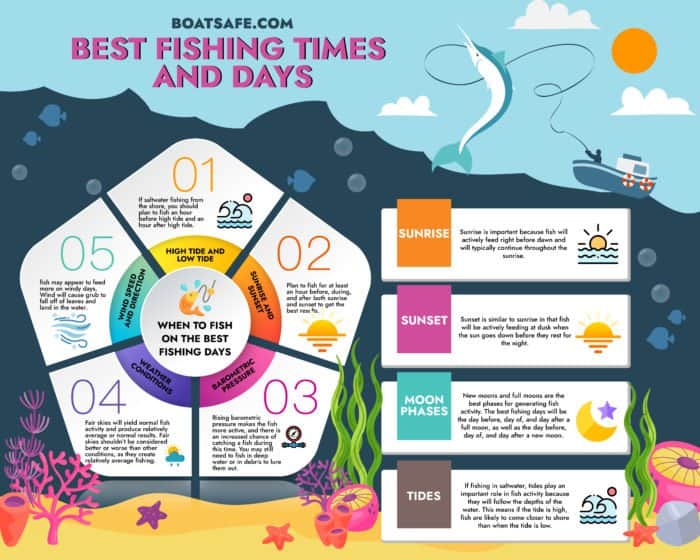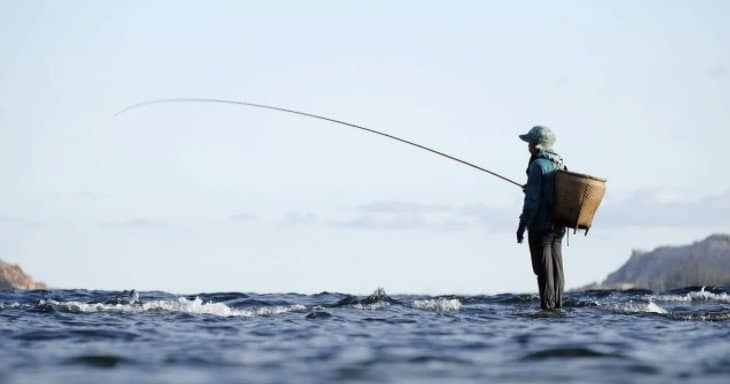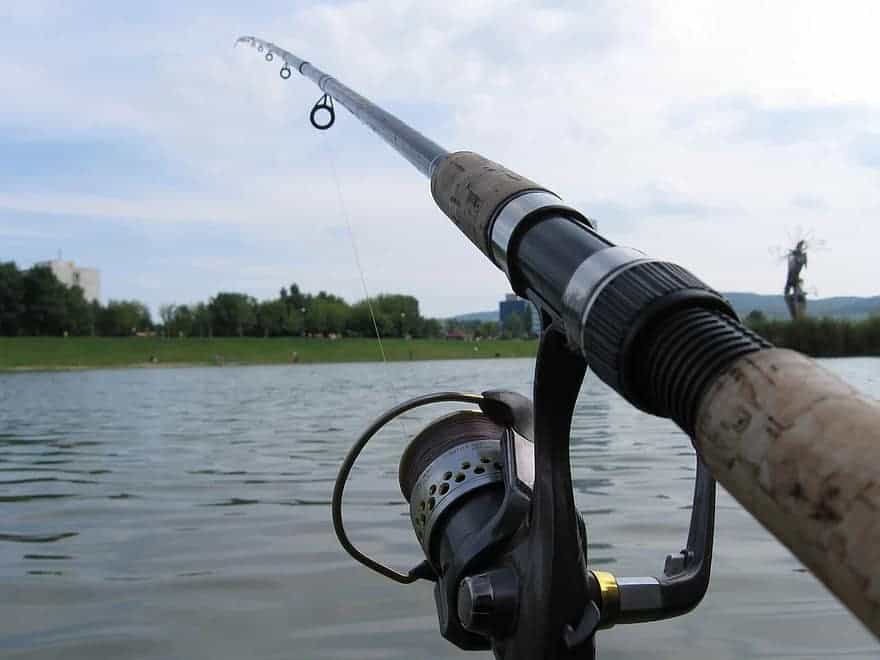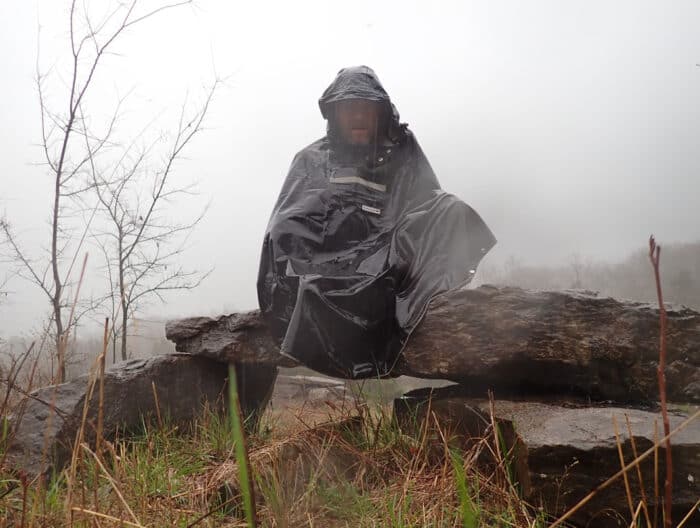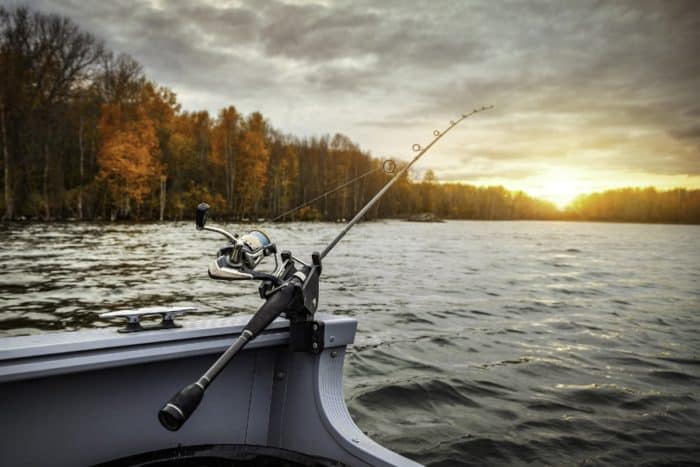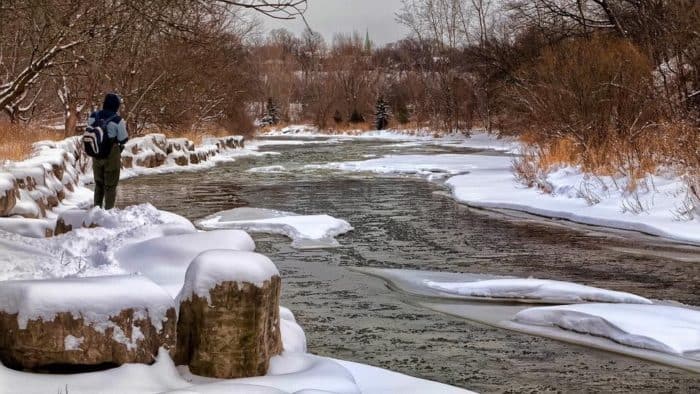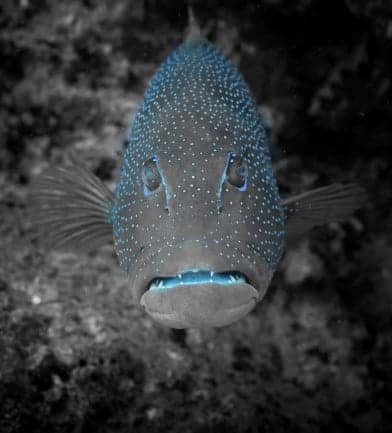Best Fishing Times and Days
Have you ever been watching the local news and noticed the weatherman discussing the best fishing time for today’s weather forecast?
Well, he’s not just making it up. There is an entire process that goes into understanding and forecasting the best fishing times and the best fishing days. The weather, moon, and time of year all play a major role in determining these intricate forecasts.
They aren’t always right. It is hard to predict how fish will react in certain weather and temperatures, but there is enough historical evidence over time that has allowed us to forecast what fishing times and days will be better than others. And this is especially important if you are fishing out-of-town in an area with a climate that you aren’t familiar with.
Predicting the Best Fishing Times and Best Fishing Days
The theory that goes into predicting the best fishing times and the best fishing days is called the Solunar Theory.
The Solunar Theory was developed by John Alden Knight in 1926 after studying fish behavior in saltwater and freshwater fish according to the sun and the moon, which is where solunar gets its name.
The Solunar Theory states that fish respond and behave differently according to the phase of the moon, the sunrise, the sunset, and the tide levels. John Alden Knight took his findings and created the Solunar Tables; the prediction of the best times and best days for fishing.
The Solunar Tables are what we see used today in almanacs and the local fishing report.
Factors that Go Into Determining the Best Fishing Times
To know when is the best time to go fishing, you have to understand the moon, sun, and tide levels where you will be fishing. This includes sunrise, sunset, moon phases (full, waxing, waning, new moon), and tide levels (high and low tide).
Sunrise
Sunrise is important because fish will actively feed right before dawn and will typically continue throughout the sunrise. Knowing the sunrise will tell you exactly when you should be on the water to fish.
Sunset
Sunset is similar to sunrise in that fish will be actively feeding at dusk when the sun goes down before they rest for the night. Some fishermen prefer to do their fishing in the late evenings and early nights because fish are often actively feeding at this time before they slow down for the night.
Moon Phases
The phase of the moon will play an important role in how fish react. New moons and full moons are the best phases for generating fish activity. The best fishing days will be the day before, day of, and day after a full moon, as well as the day before, day of, and day after a new moon.
Tides
If fishing in saltwater, tides play an important role in fish activity because they will follow the depths of the water. This means if the tide is high, fish are likely to come closer to shore than when the tide is low.
The Best Fishing Days
The best fishing days will be determined by the phase of the moon. The gravitational pull of the moon has an effect on the fish and causes them to be more active than other times. When the moon is closest to the earth is when the gravitational pull will be the greatest and this will cause the fish to move with the tide more.
This doesn’t mean you should only fish at night during these times. The phase of the moon will affect the water and the fish throughout those few days, not just during the night when the moon is out.
The Best Fishing Times
The best fishing times will depend on how active the fish are. The more active the fish, the better the fishing time.
The moon phase, sunrise, and sunset will all be taken into consideration for your exact location to give you the best fishing time for that day.
There are two major fishing times and two minor fishing times each day. The major fishing times are the two times of the day when the fish activity is the highest. The minor fishing times are the two times of the day when activity has increased to an intermediate level but is not as active as during the major fishing time.
Many anglers also believe that barometric pressure can play an important role in how fish behave.
When barometric pressure is rising or falling, fish may become more active. If the barometric pressure is rising, fish will likely become more active. The same goes whenever barometric pressure is falling.
The change in pressure acts as a warning system for the fish. Fish can feel the change in pressure, and it causes them to believe that they need to go in search of food.
If you know that a weather system may be moving in, you should consider fishing on that day when the pressure begins to change. This will give you a better time of the day to fish.
When to Fish on the Best Fishing Days
Different factors determine what is the best time to fish on the best fishing days. A fishing forecaster will look at the moon, sun, and tide to determine the major and minor fishing times for that day. Still, barometric pressure and weather conditions will also play a role in determining the best fishing time for that day.
When you know you are fishing on one of the best days to fish for the month, you should plan to fish during the major or minor fishing times to get the best results.
High Tide and Low Tide
If saltwater fishing from the shore, you should plan to fish an hour before high tide and an hour after high tide. The fish will follow the depth of the water, so when the tide comes in, the fish are more likely to be closer to the shore than during low tide. You can also plan to fish one hour before and one hour after low tide for this same reason. You will be able to go farther out into the water during low tide, giving you access to the fish that are not coming close to the shore.
Sunrise and Sunset
You should fish during the sunrise and sunset times, as these times are the most active for fish. Fish will feed during dawn and dusk, so being on the water during these times will always increase your chances of catching a fish. Plan to fish for at least an hour before, during, and after both sunrise and sunset to get the best results.
Barometric Pressure
Another consideration you should look at is the barometric pressure. Barometric pressure is the pressure in the earth’s atmosphere. Barometric pressure is constantly changing, and barometric systems constantly develop throughout the year. After all, it’s how hurricanes are formed, so they have a significant impact on both the atmosphere as well as in the water.
- High barometric pressure days are not best for fishing because fish tend to go deeper into the water and slow their activity down.
- Medium barometric pressure days should be considered normal and produce average results. The fish are not overly active but not completely inactive either.
- Low barometric pressure days are not the best for fishing either because fish tend to go deeper or take cover during these times. You may have to go out into the water further or fish in areas with a lot of debris to lure the fish out.
- Rising barometric pressure makes the fish more active, and there is an increased chance of catching a fish during this time. You may still need to fish in deep water or in debris to lure them out.
- Stable barometric pressure is normal and has the same results as medium barometric pressure days.
- Falling barometric pressure is the best time to fish when considering that day’s barometric pressure. Falling barometric pressure will put fish on the move to find food, significantly increasing the chance of one of them striking your bait.
Weather Conditions
Look at that day’s weather conditions to determine what you might be able to expect from the fish.
- Clear skies will typically cause fish to go into deeper water or take cover in areas that have a lot of shade or other debris. This can reduce your chance of catching a fish.
- Fair skies will yield normal fish activity and produce relatively average or normal results. Fair skies shouldn’t be considered better or worse than other conditions, as they create relatively average fishing.
- Cloudy or rainy weather will slow fish activity down, causing you to have to chase them in different areas you might not otherwise fish.
- After a storm has passed will typically cause fish to get on the move again, which increases the chance of catching a fish.
- Before a storm will be best for fishing because the fish will feel a change in the pressure and cause them to actively feed before the weather approaches.
Wind Speed and Direction
Fishing on windy days can not only be difficult, but it can also affect the way the fish behave in the water.
When it comes to fishing in the wind, you will need to take precautions. If you are on a boat, you should only fish in safe conditions. The wind will naturally cause your boat to drift, so take this into consideration when you are trying to navigate those small coves.
Casting a line into the wind can cause your line to be quickly carried in a direction you didn’t want it to go. You should consider adding weight to your line to prevent this from happening. Just remember that adding weight to your line can affect the way the fish react to the lure in the water, so this may hurt your fishing chances instead of helping them.
The good news about wind and fishing is that the fish may appear to feed more on windy days. Wind will cause grub to fall off of leaves and land in the water. Fish often find grub that has landed in the water irresistible. This can improve your chances when fishing during these times.
What to Use on the Best Fishing Days
Make sure your tackle box is stocked full of different lures of different colors, especially if the water is murky or muddy from a recent storm.
You should have a variety of crankbaits, spinners, jigs, and soft plastics that you can alternate when fishing. Just because you are fishing during the best time and on the best day doesn’t mean you will catch a fish. You have to use the right bait for the job.
Start out by using a fishing lure that you know and are comfortable with to see how it goes. Best case scenario, the fish love it and keep striking it. Worst case scenario, you know that it’s not working, and you need to try something else.
Conclusion
You don’t need fancy equipment or an almanac that someone else has written for you to know when the best fishing times and best fishing days are for fishing. Knowing these simple factors that go into forecasting the best fishing days and times will tell you exactly when you should be on the water.
What you will need that will help you is a fishing calendar that has the phases of the moon included. Knowing when the moon is a new moon, and a full moon will give you the best fishing days for fishing. Then you will be able to narrow those days down to finding the best fishing times to go fishing.
Make sure that you research sunrise and sunset times so that you know exactly when you should be on the water during these feedings.
The moon and sun are the most important factors that go into determining when are the best fishing days and the best fishing times.
Categories: Fishing
